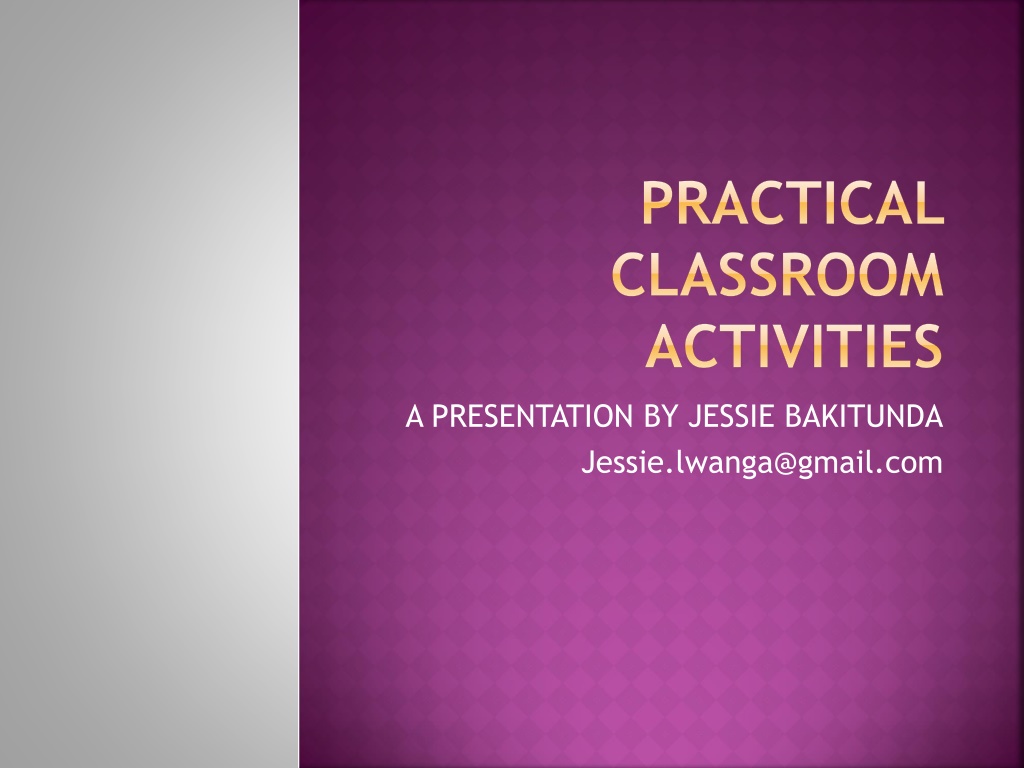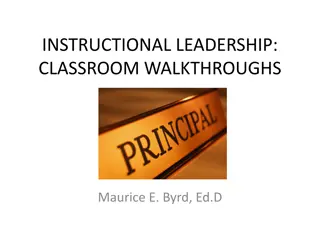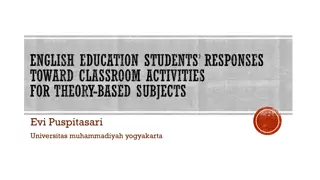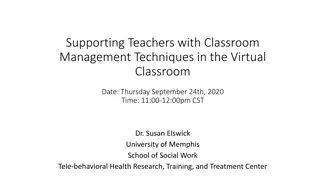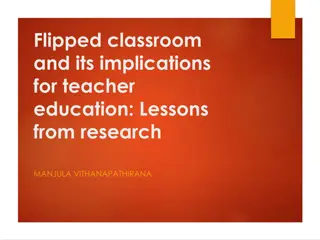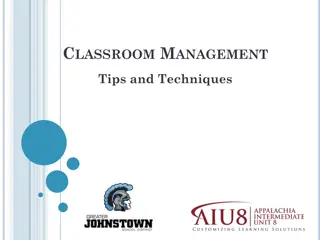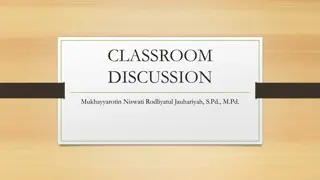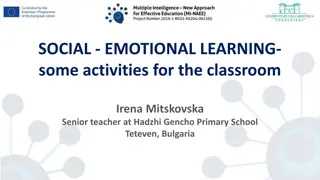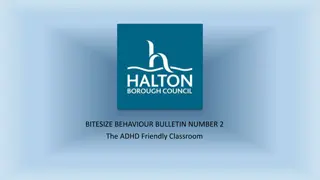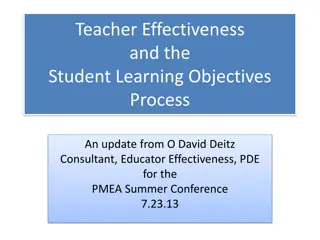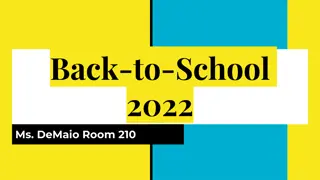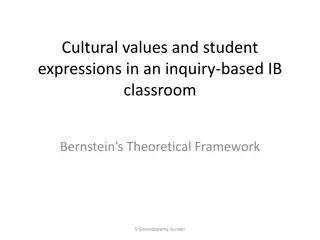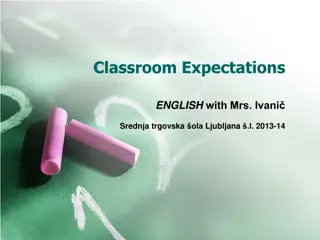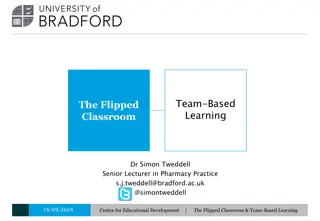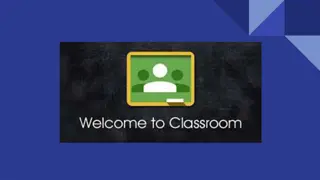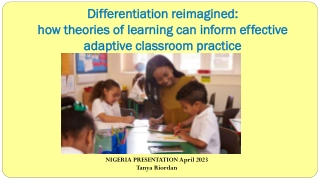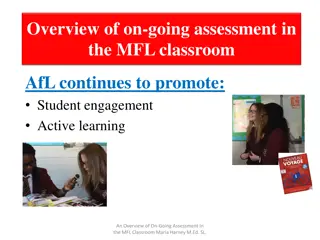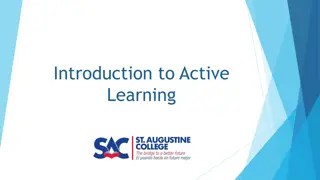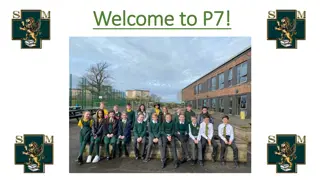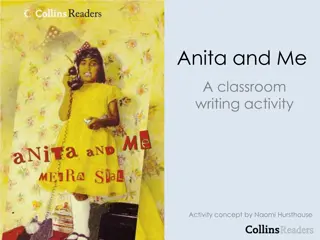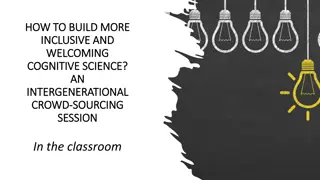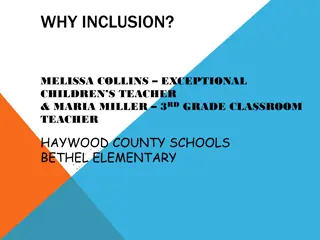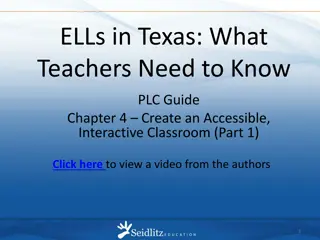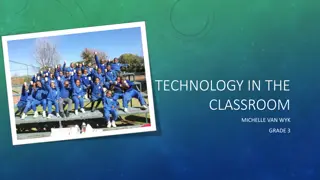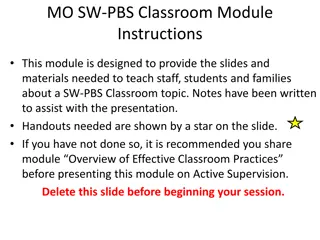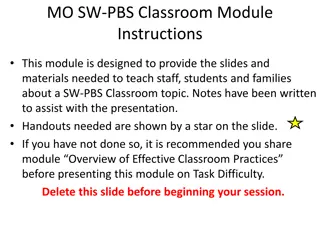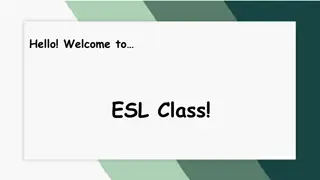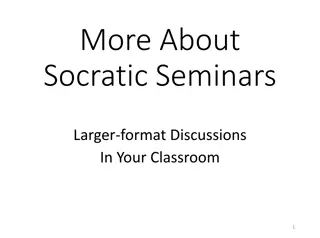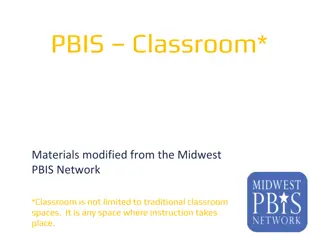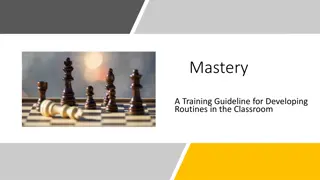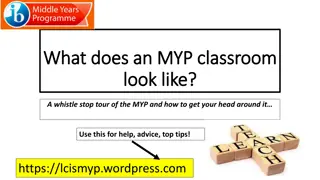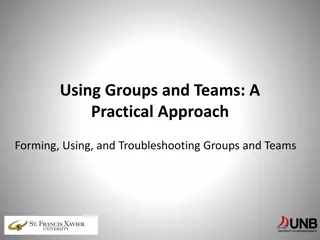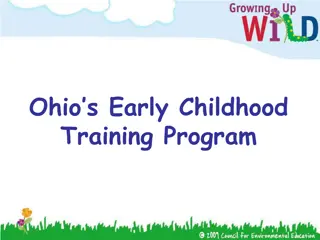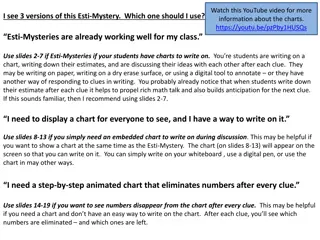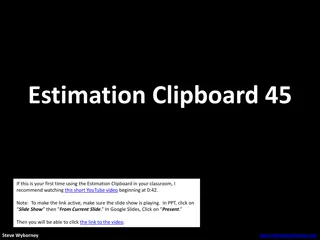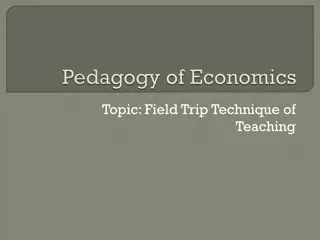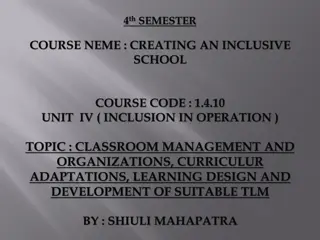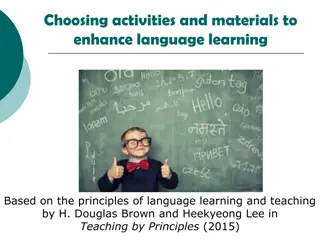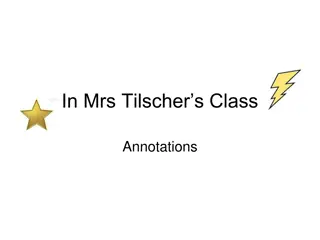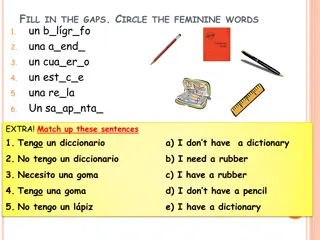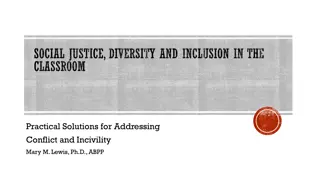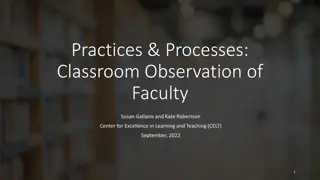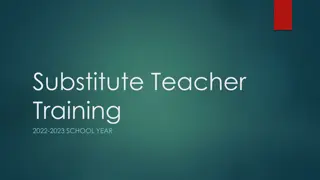Enhancing Learning Through Practical Classroom Activities by Jessie Bakitunda
Engage students in practical activities to improve learning retention and performance. Shared roles empower students and boost motivation without focusing on rewards or competition. Emphasize cooperation, active involvement, and enjoyment for effective language teaching. Consider students' experiences and interests to create engaging activities that promote learning.
Download Presentation

Please find below an Image/Link to download the presentation.
The content on the website is provided AS IS for your information and personal use only. It may not be sold, licensed, or shared on other websites without obtaining consent from the author. Download presentation by click this link. If you encounter any issues during the download, it is possible that the publisher has removed the file from their server.
E N D
Presentation Transcript
PRACTICAL CLASSROOM ACTIVITIES A PRESENTATION BY JESSIE BAKITUNDA Jessie.lwanga@gmail.com
LEARNING BY DOING: THE MORE ACTIVELY INVOLVED STUDENTS ARE IN THEIR OWN LEARNING, THE MORE THEY ARE LIKELY TO REMEMBER WHAT THEY LEARN. PRACTICE MAKES PERFECT!
ACTIVITY. Mapping self.
KEY DEFINITIONS Practical :Concerned with actual doing. What it is not concerned with doing is theory or just ideas. A classroom: A room in a school where teaching and learning takes place. Activity: A condition in which things are happening or being done
THINK ABOUT IT I DO A LOT OF WORK!I ACTUALLY HAVE A PRACTICAL CLASSROOM SINCE I AM THE ONE WHO SPEAKES, THE LEARNERS DO NOT HAVE MUCH TO SAY SINCE THEY ARE BUSY WRITING THE NOTES I HAVE TO COPY DOWN ON A BLACKBOARD. ON TOP OF THAT I AM ALWAYS MARKING EXERCISES. I DO A LOT OF WORK!
WHAT IS IT IN FOR ME TO GO PRACTICAL. SHARED ROLES. Responsibilities given to learners who later become more independent. (Empowerment). IMPROVED PERFORMANCE: for all students between 15-30%. The impact is seen mostly with low achieving students who gain more than this. Research by Black and William Concluded that no other single improvement initiatibe improved performance to the extent of the learner centered approach (strategies and activities
CONTINUED All students are encouraged (motivated) to learn since the emphasis is not on rewards, marks or ranking. If learning is rank oriented, there is negative competition. Focus is on the strengths of learning which builds self esteem, morale and risk taking. This is because students start from what they already know, not abstract things (KLW). Teachers lesson planning and delivery becomes more reflective and plan specifically to meet learners' needs. PROMOTES COOPERATION ACTIVE INVOLMENT, EASY TO REMEMBER. ENJOYABLE: No Sleeping.
CONSIDERATIONS FOR THE LANGUAGE TEACHER WHEN CHOOSING AN ACTIVITY. Ask don t tell Start from what Students know since they are not empty vessels. Follow the KLW. Do not be keen on ever correcting accuracy: This downpours on the learner who eventually will avoid participation to avoid being corrected in public. Students have choices and make decisions about learning. Group work requires negotiation and decision making working together towards a common goal. Focus on students experience and interests. Personify the activity or text, bring it closer to your learners day today experiences. When this happens, students are more likely to be more involved in the lesson, thereby remembering more. Focus on confidence :Develop communicative competence in learners
CONSIDERATIONS CONTINUED. Tasks are open-ended: tasks with more than one possible solution alongside the Traditional grammar. Encourage interest in English used in the real world. By using authentic materials familiar to the students (magazines, the internet, video, television, letters etc.), students are constantly in touch with the language in an absorbing way. Students learnmore than language. They are also encouraged to think critically and develop problem- solving skills through more creative tasks and group work. Ask them what makes them mad and how they can sort it.
THE PROBLEM IN OUR ENGLISH CLASSES. English as a second language seems to be hard with many dos and don ts (grammatical rules). This this boring to them learners who resort to route learning in order to get it. Do they really get it? Teachers then resort to copying down notes for the learners full of tenses, proverbs, synonyms, conjunctions and others with the expectations that the learners will cram it and put it right in the paper. A lot of work, isn t it? Students then sleep, or stealfully read a novel or would rather hide in that smelly school toilet .
WAY OUT GO PRACTICAL Make the learners work after their own interests with a bit of gudance from you (teacher). Give them roles to keep them motivated. Do not tell it all, they know something. Check the environment
ACTIVITIES YOU CAN ADOPT. Role play Use of puzzles Drama Story telling Who: Think , pair , share. Singing songs. Group discussions Debating Demonstrating Watching a video Listening to an audio Online chatroom (blogging, facebooking, Offline chats etc.) Drawing
GALLERY WALK This activity is purposed to teach descriptions (adjectives) as well as critical thinking in the learners.
TAKE YOUR STAND This activity tests the different learner opinions. It can be good for a grammar and speaking lesson.
JIGSAW This activity was developed by Elliot Aronson IN 1971. Cooperative learning strategy and two doubles as a sort group work. Note: Each student takes responsibility of one chuck of a content and teaches it to other group members
JIGSAW STRUCTURE Step 1 Divide students into groups of 4-6 Each student gets a separate question. Each student (expert)is= (chuck topic) Works best with same number of students. Jigsaw groups.
JIGSAW CONTINUED Step 2 Group the experts together to discuss ideas and get clarity where need be.
ACTIVITY; LISTEN TO THE EXPERT. Once Upon a Time Once upon a time, son, they used to laugh with their hearts and laugh with their eyes: but now they only laugh with their teeth, while their ice-block-cold eyes search behind my shadow. There was a time indeed they used to shake hands with their hearts: but that s gone, son. Now they shake hands without hearts while their left hands search my empty pockets. Feel at home! Come again : they say, and when I come again and feel at home, once, twice, there will be no thrice- for then I find doors shut on me. So I have learned many things, son. I have learned to wear many faces like dresses homeface, officeface, streetface, hostface, cocktailface, with all their conforming smiles like a fixed portrait smile
And I have learned too to laugh with only my teeth and shake hands without my heart. I have also learned to say, Goodbye , when I mean Good-riddance : to say Glad to meet you , without being glad; and to say It s been nice talking to you , after being bored. But believe me, son. I want to be what I used to be when I was like you. I want to unlearn all these muting things. Most of all, I want to relearn how to laugh, for my laugh in the mirror shows only my teeth like a snake s bare fangs! So show me, son, how to laugh; show me how I used to laugh and smile once upon a time when I was like you. Gabriel Okara
QUESTION. 1. a). Who is talking in the poem? b). Why do you think the poet has given it the title, Once Upon a Time ? 2.aWhat assumptions can you make about the kind of life he has lived and his present circumstances? 3.What kind of person do you imagine him to be? 4.What has he learnt to do with his own feelings 5.Who is the person addressing? 6 a.).What does he hope to learn from him? b.). What does he mean by wanting to unlearn all these muting things ?
Youve been a very good team to work with; thank you very much! - Jessie Bakitunda UNELTA
